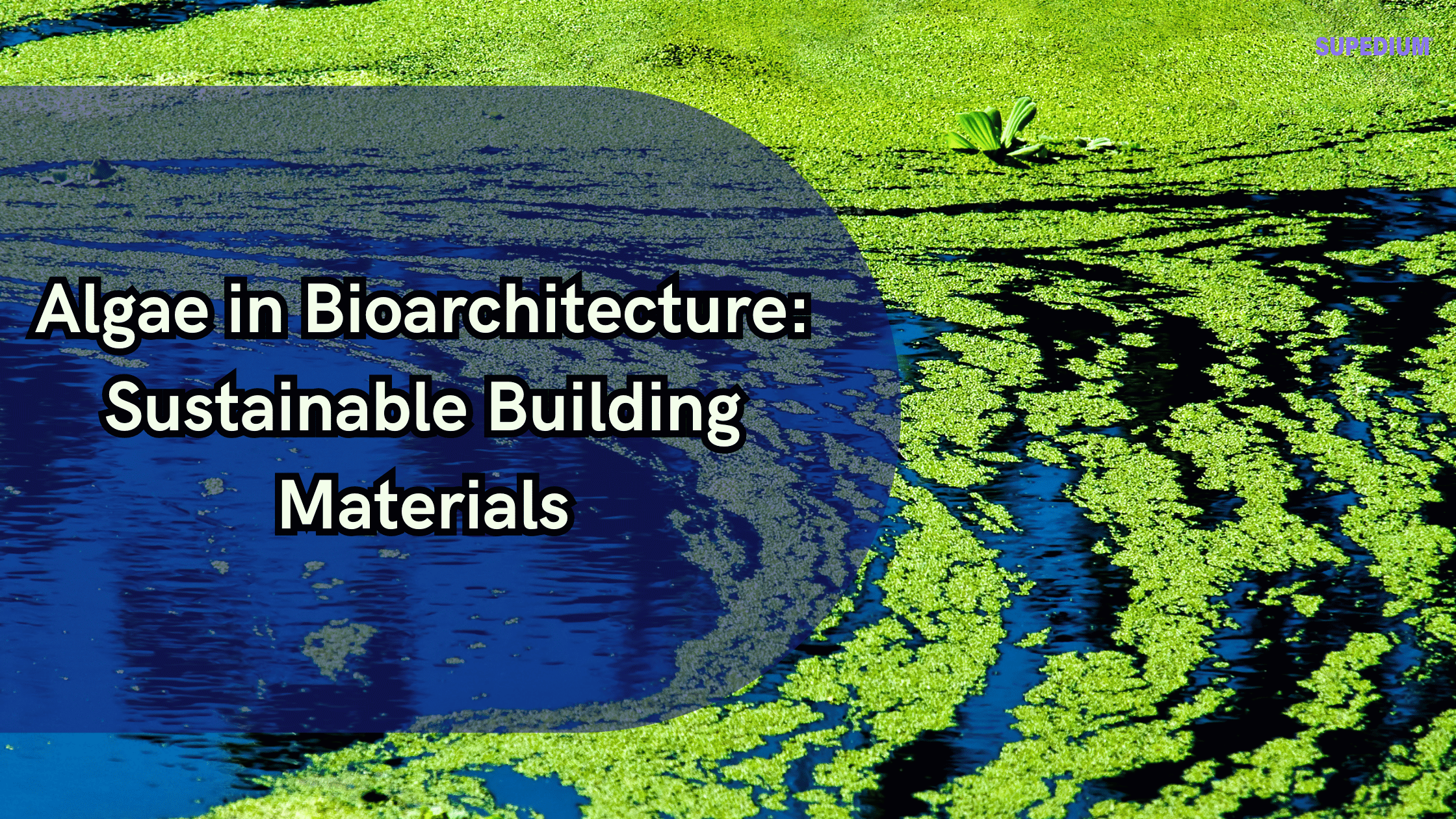Table of Contents
![]()
I. Introduction
As the world grapples with the urgent need for sustainable practices, bioarchitecture has emerged as a vital approach that harmonizes architectural design with ecological principles. This field emphasizes the integration of natural materials and energy-efficient systems, aiming to create structures that minimize environmental impact. Among the innovative materials gaining traction in this domain, algae stands out as a promising candidate.
Algae, a diverse group of photosynthetic organisms, can play a significant role in the future of sustainable building materials. From microalgae to macroalgae, these organisms not only offer unique properties but also present an opportunity for architects and builders to enhance sustainability in construction.
II. Characteristics of Algae
A. Biological Properties
Algae are versatile organisms that thrive in various environments, including freshwater, saltwater, and moist terrestrial ecosystems. Their growth patterns are rapid, enabling them to reproduce quickly and efficiently absorb nutrients. This biological adaptability is one reason they can be cultivated sustainably for building materials.
B. Physical Properties
Algae exhibit several physical properties that make them suitable for construction. They are lightweight yet possess remarkable flexibility and strength. This combination allows for innovative applications in various architectural elements, contributing to the overall efficiency of structures.
C. Ecological Benefits
One of the most compelling aspects of algae is their ability to sequester carbon dioxide, making them effective agents in combatting climate change. Additionally, certain algal species can purify wastewater, providing an ecological service that can be harnessed in urban settings. This dual benefit enhances their appeal as a sustainable resource.
III. Types of Algal-Based Building Materials
A. Algae-Based Bioplastics
Algae can be processed into bioplastics, which serve as an environmentally friendly alternative to traditional petroleum-based plastics. These bioplastics can be molded into various forms for use in construction, including insulation panels and decorative elements. The production process often involves using the algae biomass, minimizing waste and maximizing sustainability.
B. Algal Biofuels and Energy-Generating Materials
Incorporating algae into building systems can also generate biofuels or energy. Algae can be integrated into systems that capture sunlight and convert it into usable energy, thus reducing the building’s overall energy footprint. Innovative designs, such as solar-collecting algae panels, exemplify this application in real-world scenarios.
C. Algae in Concrete
Research has shown that incorporating algae into concrete can enhance its properties, making it stronger and more durable. Algae-infused concrete not only improves performance but also provides a sustainable alternative to traditional concrete production, which is notoriously carbon-intensive. This application is being explored by various research institutions and construction companies.
D. Bio-composites using Algae
Combining algae with other natural fibers creates bio-composites that can be used in various structural applications. These composites offer an excellent balance of strength and weight, making them suitable for load-bearing elements in buildings. Furthermore, they are biodegradable, reducing the environmental impact at the end of their lifecycle.
IV. Innovations and Case Studies
A. Existing Projects Utilizing Algae
Several pioneering projects are already utilizing algae in architectural designs. One notable example is the Living Architecture project, which explores the integration of algae in building facades. These facades not only improve energy efficiency but also contribute to the aesthetic appeal of the structures.
B. Research and Development
Academic institutions are actively researching the applications of algae in architecture. Studies focus on optimizing algal cultivation techniques, exploring various species for their building properties, and assessing their environmental impacts. Innovations in cultivation technologies, such as vertical farming, are also enhancing the feasibility of using algae on a larger scale.
C. Future Projects and Prototypes
Looking ahead, several future projects aim to harness the potential of algae in sustainable building practices. These conceptual designs often focus on integrating algae into urban environments, transforming buildings into living systems that interact with their surroundings while producing energy and purifying air.
V. Environmental Impact
A. Lifecycle Assessment of Algal Materials
Conducting a lifecycle assessment (LCA) of algal materials is essential for understanding their environmental benefits. Preliminary studies indicate that algae can significantly reduce carbon emissions compared to conventional building materials. Their cultivation typically requires fewer resources, such as water and land, which further enhances their sustainability profile.
B. Role in Circular Economy
Algae’s biodegradability and renewability position them well within the framework of a circular economy. Unlike many traditional materials that contribute to landfill waste, algal materials can decompose naturally. Moreover, their potential for reuse and recycling makes them a valuable addition to sustainable building practices.
VI. Challenges and Limitations
A. Technical Challenges
Despite their potential, there are technical challenges in cultivating and harvesting algae for building materials. Developing scalable methods for mass production while ensuring consistent quality remains a hurdle. Standardization of algal materials for construction purposes is also necessary for broader acceptance in the industry.
B. Economic Factors
The economic viability of algal materials is another consideration. While they offer numerous benefits, the initial costs associated with research, development, and production can be high. Additionally, gaining market acceptance and attracting investment in algae-based products poses challenges that must be addressed.
C. Regulatory and Policy Considerations
Regulatory frameworks play a crucial role in the adoption of innovative materials like algae. Building codes and standards may need to be updated to accommodate new materials and technologies. Supportive policies that encourage the use of sustainable materials can foster innovation and investment in the algae sector.
VII. Conclusion
Algae holds significant promise as a sustainable building material in the realm of bioarchitecture. Its unique biological and physical properties, combined with ecological benefits, position it as an innovative solution to the pressing challenges of modern construction. As architects and builders explore the potential of algae, it is crucial to address the technical, economic, and regulatory challenges that accompany its use.
With continued research and development, algae could revolutionize the way we think about building materials, paving the way for a more sustainable and resilient future in architecture.
Share This





Be the first to comment